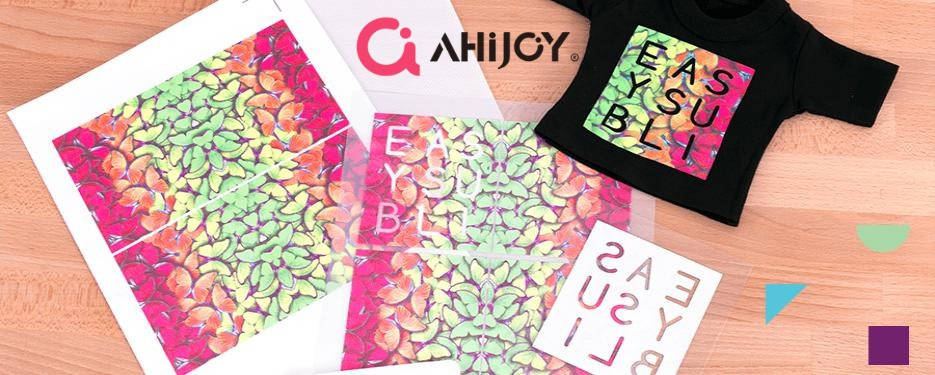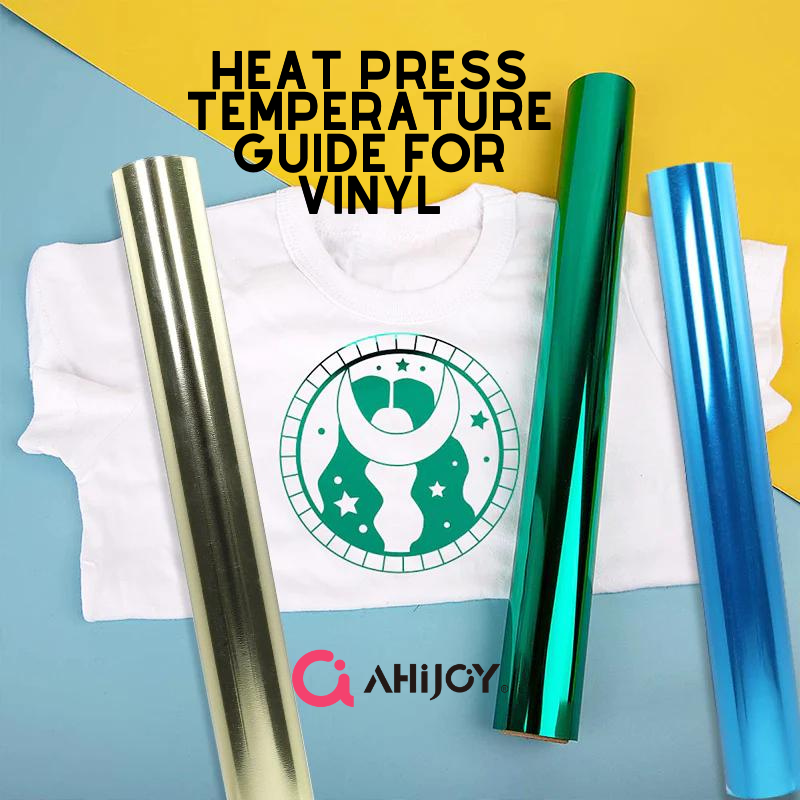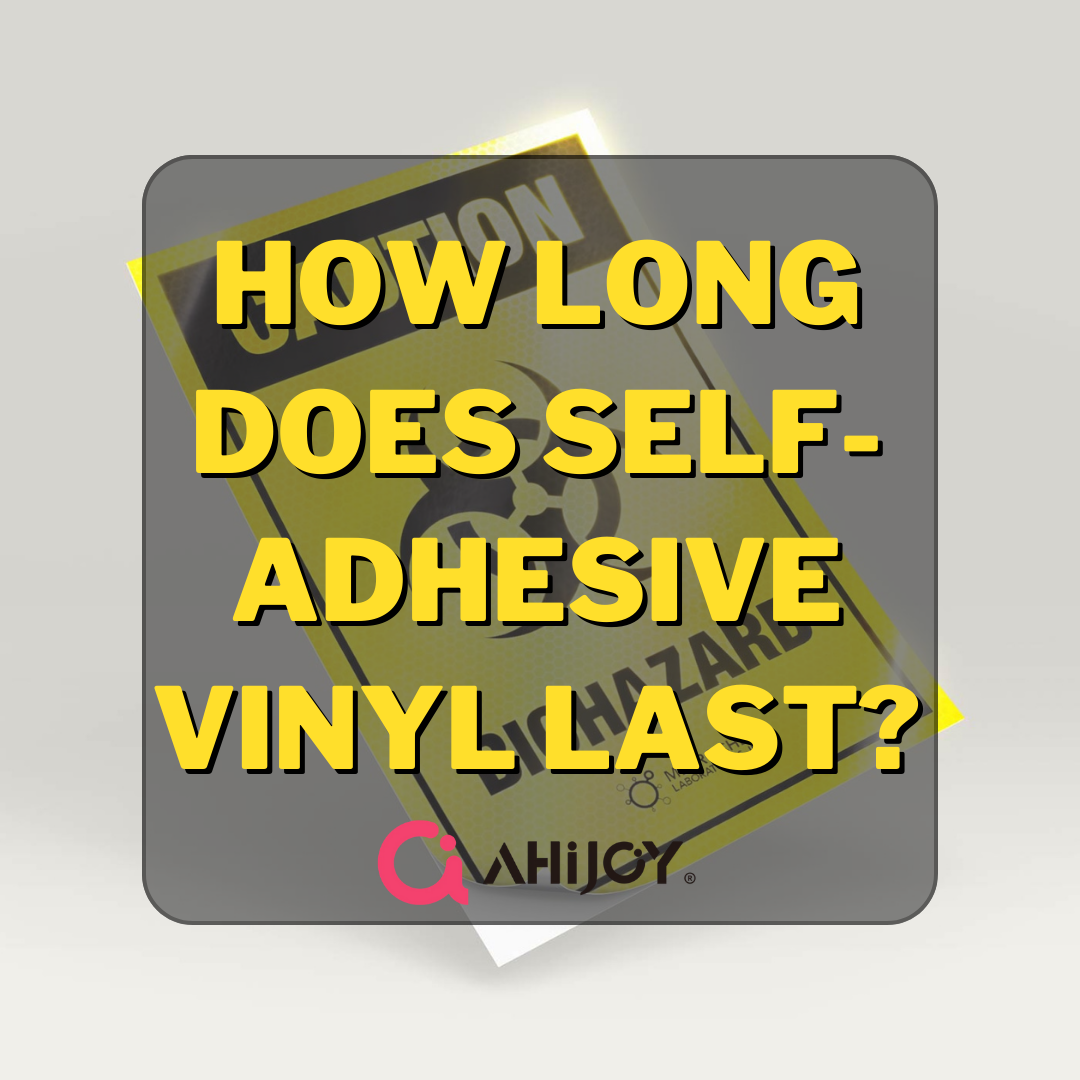Posted By Ahijoy On April 03, 2023
Can You Use HTV On Polyester?
Are you tired of wearing basic monotonous clothes? If you want to jazz up your wardrobe, Heat Transfer Vinyl (HTV) is your best bet. This vinyl polymer has special adhesive properties which are activated when heat and pressure are applied to it. It is a material primarily used in the embellishment of fabrics and does a wonderful job with cotton. But will it work with polyester or poly blend fabrics? The answer is yes! Let us explore what you should do to decorate your polyester garments.

Understanding The Polyester Fabric
Before we discuss the process of applying HTV to polyester, we need to understand the intricacies of this fabric. Polyester is a manufactured synthetic fabric that is resistant to stretching and shrinkage. It is not an easy fabric to work with when applying HTV as it cannot tolerate high heat and either scorches or melts depending on the intensity of temperature.
The special characteristics of this material are its durability and strength which leads to longer wearability. Moreover, polyester is less likely to shrink and wrinkle which is why this material is preferred over cotton in mass production. Its lightweight and absorbent qualities also make it comfortable and easy to care for.

Not all polyester fabrics are the same. It is often blended with other materials such as cotton, viscose, and elastane. Hence it is essential to look at the tag of your clothing before you start prepping it for vinyl application. This is due to the fact that pure polyester and poly blends have different melting points. You will have to adjust the temperature of your heat press machine to deal with each making the HTV adhere to them perfectly.
As discussed earlier, polyester has a low melting point and is prone to damage due to heat therefore, when applying HTV to it, the temperature should not exceed 270°F initially. You can increase it gradually if the HTV is not adhering properly to it or if you feel you cannot do so, you can increase the time duration instead. Applying HTV to polyester is a trial and error method and you will have to adjust different settings to reach the ideal one. This may differ if you are using a cotton/poly blend material therefore always know what you are working with to avoid undue damage.
Choosing The Right Heat Transfer Vinyl For Polyester
Once you are sure about the composition of your fabric, you can now pick the heat transfer vinyl of your choice. The main properties of HTV that make it so attractive is that despite frequent washing and drying, it does not peel or fade. Moreover, it is thin and flexible which makes it easy to work with.
When it comes to using HTV on polyester fabrics, it is important to choose the one that is suitable for use on synthetic materials and can be applied at a low temperature. Do not compromise on quality either otherwise you will not get a long lasting result. These types of HTV are designed to adhere well to polyester without damaging or melting the fabric
Different Types Of HTV For Polyester
At Ahijoy, we have several options that are compatible with both polyester and poly blend materials. You can pick and choose from a variety of colors, patterns and textures that can take your fashion game to the next level. Some of our best sellers include:
- Standard HTV: This is the most common type of HTV and is suitable for use on a wide range of fabrics including polyester. It has an extensive variety in both standard and neon colors that can make your apparel appear unique. It is available in both glossy and matte finish.
- Glitter HTV: Full of minute specks of glitter and sparkles, this vinyl brings glamor to your wardrobe and can easily be applied to polyester. The shimmery finish is available in bedazzling colors and a striped pattern as well.
- Metallic HTV: This futuristic category can adorn your polyester apparel in gilded designs. It has a distinct reflective sheen to it that is sure to captivate others. It is perfect for those who like a flamboyant look with an extra dose of high luster.
- Holographic HTV: This vinyl radiates an iridescent shimmer that will add vibrance and glamor to your polyester shirt. It is available in two types: opal and holographic soft metallic. Opal HTV presents a beautiful play of different vivid shades against a glossy base.
- Patterned HTV: If you want a funky and cool design on your polyester shirt, patterned HTV is the ideal choice. Enhance your attire with stunning decals like Starry Sky, Rainbow, Plaid, Camouflage HTV and much more.
Precautions To Take Before Applying HTV To Polyester
To minimize potential mishaps, you can use the following tips for a smooth application process:
Test Your Material
Whether you are using polyester or poly/cotton or any other poly blend, you might want to test a piece of the fabric. This is due to the fact that material composition can affect melting points which in turn will affect your heat and pressure settings. You will also come to know how much heat your fabric can bear and work accordingly when applying HTV. If the decal discolors the garment or starts peeling, you will need to adjust the settings accordingly.

Heat Press Temperature Guide For Vinyl
Use A Cover Sheet
Using a sheet can provide a barrier against excessive heat so that you do not burn your polyester fabric. However, the sheet should be a heat transfer one as the material works well with polyester. You can use parchment paper or a Teflon sheet. Avoid using a silicone sheet as you may have to adjust pressure and temperature settings which may not be accurate and end up scorching your polyester garment.
Avoid Pre-Washing Your Polyester Shirt
You may feel the need to have a clean substrate to work with but do not wash your polyester shirt on the same day you plan on applying HTV to it. No manufacturer states that you have to do so and it will not get you better results. Therefore, make sure your polyester cloth is completely dry before using vinyl.
Pre-Press Your Polyester Fabric
This can be extremely beneficial for the final outcome as it eliminates any existing moisture in the fabric. In order to do this, start with a low temperature and light pressure as you just need to warm it up. Setting the heat press at 270°F and applying medium pressure for 10-15 seconds is enough. This practice also removes wrinkles, so you have a smooth surface to start working with.

Don’t Apply Excessive Heat To Polyester
During the process of applying HTV, it’s better to start with a lower temperature and increase it later gradually if you’re facing any problems. If the HTV is not adhering to your polyester shirt properly, you can always apply heat again to fix the issue but you would not want a scorched and discolored shirt that is irreversibly damaged. The recommended temperature for polyester is 270°F with medium to light pressure for 10-15 minutes.
you will require a different type of vinyl to apply to them. You may use one that has an adhesive which activates at lower temperatures.
- One Dot (•) = Iron at maximum temperature of 230ºF.
- Two Dots (••) = Iron at maximum temperature of 302ºF.
- Three Dots (•••) = Iron at maximum temperature of 392ºF.
Choose The Correct Heat Source
A heat press machine is the ideal option when working with polyester as it allows for more temperature adjustments, and you can adhere intricate designs with it. You also have an idea about the amount of pressure you are applying so the chance of error is minimal. However, you can use an iron as well but it is better to avoid it in case of polyester garments. If you are a frequent user of vinyl, then you should invest in a heat press for better results.

Increase The Time Span When Pressing
When using polyester fabric, you have to keep the temperature low. This might lead to the HTV not adhering properly. If you face this problem and you cannot increase the temperature fearing the garment might scorch, you can increase the press time. Pressing the garment, checking and then repressing until you get the desired result is the right way to go without causing any damage.
Be On The Lookout For Bleeding Dyes
Some polyester fabrics are dyed using a process which leads to bleeding. This means you will have a two-toned garment in your hand with a different shade where HTV is applied. Hence such garments are to be avoided as they can change their color. Conversely you can use low temperatures on them for HTV transfer. You will have to experiment to see what works best. You can also opt for an HTV film that blocks out sublimation migration to avoid bleeding.

Double Check Your Settings
The last tip and the most important of all is to make sure you have the right settings of temperature, pressure and time on your heat press machine when working with polyester before starting the final process.
The Process Applying HTV On Polyester Fabrics
Now, you may embark upon the application of the heat transfer vinyl decal on polyester. Here are the steps you can follow:

- Start by preheating your heat press to the temperature that you have finalized after the patch test. Roughly speaking this should be around 270°F to 280°F.
- Next, preheat your polyester fabric and make sure it is completely dry so the decal can adhere properly. There shouldn’t be any moisture in it.
- Cut and weed out the design you will be using with an automated cutter. For removing negative vinyl, you can use the weeding pen available at Ahijoy.
- Now place the decal on your polyester garment in the position you want it and apply pressure on it using a squeegee.
- Place a Teflon sheet or parchment paper on top of the design. You may now apply heat to it. Set the heat press to the recommended temperature and pressure for 10-15 seconds. Start with the lower temperature.
- Remove the heat source and let your decal cool down a bit. Peel the carrier sheet warm to see if the vinyl has adhered properly and if there are any loose edges that need to be fixed.
- If the decal is coming off, reapply heat. You can increase the temperature a bit or increase the time duration whatever works best with your polyester garment.
- Once done, let the fabric cool a bit and peel the carrier sheet to see if the vinyl has adhered perfectly. You might have to repeat the process in case it is still coming off, otherwise you now have a polyester shirt with an exquisite HTV design on it ready to win praise. Finally your brand new and upgraded polyester attire is ready!
Maintenance Of Polyester After HTV Application
Simply following a proper care and maintenance routine can make your HTV design and custom name last longer and keep its luster. Here’s what you should do:

- Do not wash your polyester garment for at least 24-48 hours after applying HTV.
- Wash your garment with hands. Turn it inside out to protect the vinyl decal.
- Use mild detergent and cold water. Harsh chemicals can deteriorate the quality of polyester as well as cause the vinyl to peel off. Warm water may adversely affect the adhesive of the vinyl.
- When you are done washing, it is preferable to hang your polyester clothes to dry rather than tumble drying them. Hang them on a clothesline away from the sun.
- Finally, when storing your polyester shirt, do not fold over the design but lay it flat to avoid cracking or creasing of the vinyl decal.
Cotton Or Polyester - Which Fabric Is The Best To Use With HTV?
Both cotton and polyester have their plus points and negative aspects. It depends on what you would prefer to use and the requirements of your project. Below is a brief lowdown on the advantages and disadvantages of both fabrics:

Advantages Of Polyester
- Polyester is inexpensive.
- It is a lightweight material that absorbs moisture and sweat. Hence it is used in activewear.
- It is strong and flexible.
- It neither wrinkles nor shrinks.
- It is a stretchy material.
Disadvantages Of Polyester
- It is not colorfast.
- It is not breathable and might stick on perspiring skin.
- It cannot not tolerate high heat and might get scorched.
Advantages Of Cotton
- It is a natural fiber.
- It is more eco-conscious.
- It is soft and comfortable.
- It is breathable and does not cling to a sweaty body.
- Due to vast usage, it is quite easily available.
- It is hypoallergenic.
- It can bear high temperatures.
- It creates an excellent bond with HTV.
Disadvantages Of Cotton
- It shrinks easily.
- It gets wrinkles and creases.
Whether you want to use cotton or polyester for your HTV project completely depends on your requirements and preferences. If you are printing shirts for a business as giveaways, they would prefer using cost-effective materials hence they might lean towards polyester. Polyester shirts can be a profitable option because they are less expensive than cotton and can be utilized for various purposes.
If you are designing shirts for friends and family, then cotton is the best choice. If you want to avail the advantages of both the fabrics, opt for poly/cotton blends.
Frequently Asked Questions
Final Words
Heat transfer vinyl has opened many doors for the fashion industry. Now, you can explore the infinite possibilities using polyester and HTV with this simple guide. Whether you are a first timer or a veteran vinyl user, Ahijoy has got you covered. Head over to our website and choose from our range of products today and apply exquisite designs on your polyester shirt!



